 You’ve likely heard some Cinderella stories when it comes to restaurants and TikTok. A happy guest posts a creative video and the next day, the surprised restaurant operator opens to a line of 100 people waiting to eat. (That’s roughly what happened last December for Skirt Steak, the New York restaurant serving steak and unlimited fries.) To be sure, TikTok packs some power when it comes to restaurant marketing. But hitting on that lightning-in-a-bottle moment where you send a post viral can be pretty elusive. On top of that, tastes for different platforms shift so quickly that if you’re not among the early adopters of a platform that then becomes popular, you may not get much traction. While there is no formula for capturing a moment that ends up going viral, it’s important to focus on the constant: video remains an important tool to be used for restaurant marketing. The restaurant industry is ready-made for video promotion – there is a steady supply of behind-the-scenes action to feature, an ever-changing range of challenges and surprises, and sights and sounds that appeal to people’s senses. Make it a habit to capture this content – or give the task to a staff member to manage. Share a recipe or promote a new special via video. Launch a contest or spread the word about an event. Across social media platforms, from Facebook to Instagram to TikTok, video content is getting the most attention from users (and therefore the most focus from the people running those platforms). But focus less on the platform and more on finding creative ways to use video to get your restaurant’s name out there so you’re ready to share it in a range of ways. It may even be more about inspiring your guests to do it for you. Encourage guests who have positive experiences to share them as video posts on their favorite platform in exchange for a free drink or appetizer during their next visit. Who knows? One video post may end up sending hundreds of guests to your door. If you don’t regularly use video to promote your food, people and background story, listen up: A Brightcove study found that 76 percent of adults report that they make a purchase after watching a marketing video – and nearly half of consumers watch branded video on social media. As you prepare to ramp your business back up after the pandemic, consider creating a calendar of video content that you can share across your social media channels. There are a multitude of options to try. Record a mini cooking tutorial with your chef – or have him or her share favorite tips for using a seasonal ingredient. Talk about how you source food and make decisions about where to get the items you serve – or record your visit to a local farmer’s market or small supplier. Have a new staffer on board with an interesting life story? Record a brief interview with the person and ask questions that share a bit about his personality, background and professional role. How about your restaurant’s story – or the history behind your restaurant’s location? You can share promotional content too – like a contest to win an appetizer platter for the Superbowl or a house-brewed beer subscription for a month. The key is to find ways to share your restaurant’s authentic self and create useful or entertaining content that viewers will want to share. Look at this winter as a time to build your brand and strengthen customer loyalty for when people feel safe returning in bigger numbers.
Your restaurant marketing strategy has likely done an about-face in recent weeks and months – or if it hasn’t, perhaps it should. Schedules and traffic patterns have shifted, so the people who used to buy a quick, easy meal they could pick up on their route home from school or work are likely spending a lot more time at home at the moment – and may not be passing your restaurant at all in the course of a week. Cravings may have changed too. This doesn’t mean people haven’t been craving your food – in fact, they may be missing it more than ever. But how can you tap into their current mindset and make it appealing for them to place an order or, better yet, venture out to dine with you or pick up their food themselves? Start by showing how your restaurant is relevant to people’s lives: Is there an easy, tasty recipe you can share that will satisfy everyone in a household? Can you post a video of your chef inventing a meal on the spot using a few ingredients – or dreaming up ways to use pantry staples when certain ingredients are unavailable? Total Food Service suggests sending out surveys to guests, asking them questions about your menu and getting a sense of what they are preparing at home. What would entice them to come out right now? That may help you refine your current menu and promotions – and avoid offering a family-style pasta meal deal if they have been reheating spaghetti Bolognese for days on end.
Even as businesses begin reopen around the country, they won’t be returning to “business as usual” – at least until a vaccine or other treatment becomes available. As your business pushes through these challenging times, it’s critical to prepare your restaurant for when you do return and ensure that your connections with customers are as strong as possible. What lessons are you learning now that will improve your resilience going forward? What are your customers demanding and how can you deliver on it? Can you be more adaptable and nimble when it comes to your service model, menu, inventory and staffing? How might you implement technology that could facilitate social distancing when you welcome customers back to your dining room? Now is a good time to connect with your regulars and solidify your relationships with them so they can help drive your comeback. At every opportunity, share your story with them on your website and social media – how you got into the business, how you and your employees are coping now, and what it looks like behind the scenes of your restaurant at the moment. If you’re closed right now or operating at a much-reduced capacity, cook a favorite dish at home and livestream it on Facebook or Instagram – or make a quick, quirky video on TikTok (find out how here https://buff.ly/309tO53 ). At a time when most of your customers are at home and looking for ways to connect with the experiences they love, remind them that you’re one of them. Try to look at this time as a period of experimentation – with the social media you use, the stories you share, and the service structure you use – to prepare your business to come back better than it was before.
What if running a profitable restaurant became less about analyzing databases and spreadsheets and more about following AI-generated directions? That’s increasingly becoming a reality for some restaurants. In a recent roundup from Modern Restaurant Management about major disruptions to expect in the coming decade, AI applications were among the major changes industry insiders expect. David Bloom, chief development and operations officer for Capriotti’s, sees increasing potential for video to work hand-in-hand with AI – using facial recognition to identify guests and connect them with loyalty programs, reducing theft by video monitoring, and improving employee performance by monitoring their actions and providing on-the-spot upselling and service advice. #restauranttech
“When you look where 5G will end up taking us, it’s a whole other world for the retail and restaurant space.” That’s what Aaron Allen, founder and chief strategist at the global restaurant consultancy Aaron Allen & Associates, told Forbes recently. 5G, the next generation of mobile internet connectivity, promises such benefits of data upload and download speeds that are 10 to 20 times faster – speeds that could transform the technology capabilities of restaurants. AT&T sees the greatest potential for 5G in restaurants in three areas: It can significantly reduce latency (or, in other words, the time delay between when you take an action when using technology and when you receive a response), provide a boost to computing power across applications, and deliver sharp increases in speed (think of a file that currently take seven minutes to download taking just eight seconds). In practice, consider being able to use Internet of Things sensors to more efficiently track food waste in your kitchen, or to be alerted exactly when the local high school’s football game ends and you’re likely to get a post-game rush. 5G may help streamline how your POS system communicates with your third-party delivery vendors, or bring a higher level of content personalization to your menu boards, customer text messages or loyalty program promotions. These capabilities certainly exist today, but they work only as well as the network delivering them. The major internet service providers have been launching 5G in major cities throughout this year and will continue to spread the service – check with your provider for the launch timelines for your area.
Do you use video to connect with customers and even staff? If not, doing so could pay off. Recent research from Brightcove found that 85 percent of consumers aged 18-34 say they have bought a product or service after watching a video about it. Further, consumers surveyed in the study said they find video to be the most memorable form of content ― they ranked it above display ads, email marketing, case studies, text ads, and other forms of promotion. Videos can help potential guests connect with your brand and share it with their friends, which in turn can boost your search engine optimization. Cake suggests using videos on your website and social media to share a seasonal recipe tutorial, showcase your restaurant’s interior or some interesting aspect of its history, introduce staff members or guests, or promote new food and drink menus. Since video can help people connect with your brand and present you as authentic and trustworthy, it can benefit your staff recruitment efforts too. Showcase your employees ― both in the front and back of house ― going about their daily work and talking about what they like about their jobs, which can help give potential employees a better sense of your restaurant’s work environment than any job description could. Toast suggests you use a gimbal or tripod to ensure your video isn’t wobbly, lighting (inexpensive lighting kits can help), and a microphone or voice-over recording. You can use free software to edit the video you produce and Shutterstock can help you licence royalty-free music for your video if needed. Once you upload your video to YouTube, share its link on your website job page, job applications and your social media platforms.
|
Subscribe to our newsletterArchives
July 2024
Categories
All
|
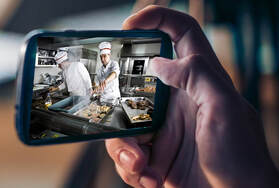




 RSS Feed
RSS Feed